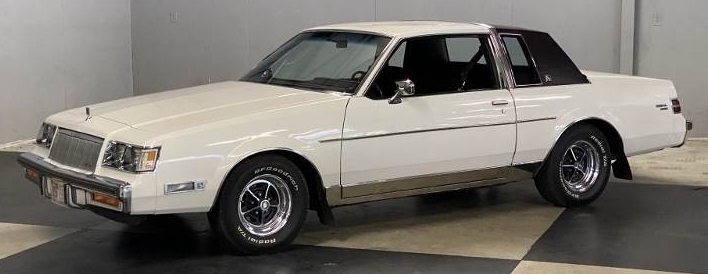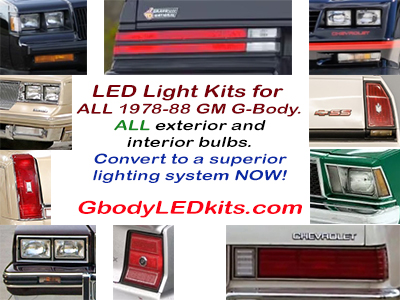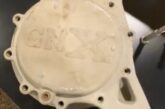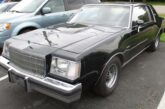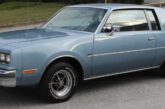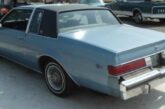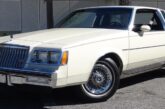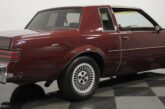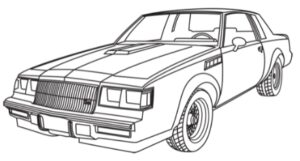1985 Buick Regal, 1985 Buick Regal Limited, 1985 Buick Regal T-Type, 1985 Buick Regal T-Type WH-1, 1985 Buick Grand National.
The year is 1985. The American automotive landscape is emerging from the doldrums of the “Malaise Era,” a period defined by emissions-choked engines and compromised designs. In this climate of cautious optimism, Buick, a brand long associated with comfortable, conservative sedans for a mature demographic, was nurturing a performance revolution. At the heart of this was the versatile G-body platform and its star player: the Regal. But to simply say “1985 Buick Regal” is to tell only a fraction of the story. It was a single model name that represented four distinct automotive personalities, ranging from a plush, traditional cruiser to a tire-shredding icon that would become a legend.
This article delves into the nuances that separated the mainstream 1985 Buick Regal and its upscale Limited variant from their formidable, turbocharged siblings: the stealthy T-Type and the legendary Grand National.
The Foundation: The 1985 Buick Regal
The standard Buick Regal coupe was the bedrock of the lineup. It was an honest, comfortable, and stylish personal luxury coupe that represented the core of Buick’s brand identity. It was designed not for the racetrack, but for the daily commute and the weekend drive, prioritizing a smooth, quiet ride above all else.
Specifications and Features:
- Standard Engine: The workhorse was the naturally aspirated 3.8-liter (231 cubic inch) V6 engine. With a 2-barrel carburetor, it produced a modest 110 horsepower and 190 lb-ft of torque. It was reliable and adequate for the car’s mission.
- Optional Engine: For those desiring a bit more grunt and the classic V8 rumble, an optional 5.0-liter (307 cubic inch) Oldsmobile V8 was available, producing 140 horsepower and 255 lb-ft of torque.
- Transmission: Engines were paired with a standard three-speed or optional four-speed automatic transmission. The focus was on smooth shifting, not performance.
- Exterior: The base Regal was adorned with plenty of brightwork. Chrome bumpers, a chrome grille with vertical bars, chrome window trim, and full wire-wheel hubcaps were standard fare. It was a classic look for the era, projecting an image of affordable luxury.
- Interior: Inside, the Regal typically featured a plush cloth bench seat, a column shifter, and a dashboard with a simple speedometer and fuel gauge. The ambiance was one of comfort, with soft-touch materials and an emphasis on isolating the driver from the road.
- Suspension: The suspension was tuned for maximum comfort. It was soft, absorbing bumps with ease, but this came at the cost of handling precision. Body roll in corners was significant, reinforcing its role as a boulevard cruiser.
Production Numbers: As the entry-level model, the standard Regal coupe was the volume seller. While exact numbers for the base trim alone are difficult to isolate, total production for all 1985 Regal coupes and Limiteds was approximately 77,294 units, making it a common sight on American roads.
The Lap of Luxury: The 1985 Buick Regal Limited
The Regal Limited was not a different car, but a heavily optioned trim level that pushed the Regal firmly into the “Brougham” category popular in the 1980s. It was for the buyer who wanted the image and comfort of a Cadillac without the price tag.
Key Differences from the Base Regal:
- Exterior: The Limited distinguished itself with added stylistic flourishes. A formal vinyl landau roof was a hallmark feature, often accompanied by “Limited” badging on the roof pillars and trunk. Extra chrome trim and optional two-tone paint schemes further enhanced its upscale appearance.
- Interior: This is where the Limited truly shone. The standard interior was upgraded to a deeply cushioned, pillow-top velour fabric on a 55/40 split-bench seat. The level of opulence was striking, with simulated woodgrain appliqué on the dashboard and door panels, thicker carpeting, and a host of standard power features like windows, locks, and a driver’s seat. It was a quiet, isolated cabin designed for long-distance comfort.
- Drivetrain and Suspension: Mechanically, the Limited shared the exact same engine options and soft-riding suspension as the base Regal. The premium was paid for luxury and appearance, not performance. The target buyer had no interest in firm handling or rapid acceleration; they wanted to arrive in style and comfort.
The Subtle Threat: The 1985 Buick Regal T-Type
Here, the Regal’s personality undergoes a radical transformation. The T-Type was Buick’s performance package, a “wolf in sheep’s clothing” that combined the Regal’s handsome lines with a powertrain that could humble V8-powered sports cars of the day. The “T” stood for Turbo, and it was the substance behind the swagger.
Specifications and Features:
- Engine: The heart of the T-Type was the 3.8-liter (231 cubic inch) V6, but this version was a different beast entirely. It featured Sequential Fuel Injection (SFI) and a turbocharger. For 1985, this engine was rated at a potent 200 horsepower and a massive 300 lb-ft of torque. This was a significant jump from the previous year’s carbureted turbo engine and set the stage for future dominance.
- Transmission: The only transmission available was the robust THM-200-4R four-speed automatic with a locking torque converter, specifically built to handle the engine’s torque.
- Suspension: To manage the power, the T-Type came standard with the Gran Touring (Y56) suspension. This package included higher-rate springs, firmer shocks, and larger diameter front and rear sway bars. This dramatically reduced body roll and transformed the Regal from a floaty cruiser into a capable handler.
- Exterior: The T-Type was the master of subtlety. It featured less chrome than its siblings. The grille and headlight bezels were often finished in body color or gray, and it rode on stylish 15-inch aluminum alloy wheels. A slight “power bulge” on the hood was the most prominent clue to the power lurking beneath. Crucially, a T-Type could be ordered in any available Regal color, making it the ultimate sleeper.
- Interior: The cabin was driver-focused. A sport steering wheel, bucket seats (or a split-bench), and a full gauge package including a tachometer and an all-important LED boost gauge were standard.
Production Numbers: With only 1,148 units produced in 1985, the Regal T-Type is significantly rarer than its more famous black-clad sibling.
The Legend in Black: The 1985 Buick Grand National
If the T-Type was the subtle threat, the Grand National was the declaration of war. It was, for all intents and purposes, a T-Type wrapped in a sinister and unforgettable appearance package. There was no mistaking a Grand National for anything else on the road.
Key Differences from the T-Type:
- Mechanics: Mechanically, the 1985 Grand National and the 1985 T-Type were identical twins. They shared the same 200 hp / 300 lb-ft 3.8L SFI Turbo V6, the same THM-200-4R transmission, the same Gran Touring suspension, the same rear axle ratio, and the same wheels and tires. Performance was, therefore, identical. The difference was entirely in presentation and marketing.
- Exterior: This is the defining feature. The Grand National was available in one color: Black. Paraphrasing Henry Ford, you could have it any color you wanted, as long as it was black. The bumpers, grille, window trim, and headlight bezels were all blacked out. The aluminum wheels featured black paint in the recesses. Prominent “Grand National” badges adorned the front fenders and trunk lid, leaving no doubt as to its identity. A front air dam and rear decklid spoiler completed the aggressive look.
- Interior: The Grand National’s interior was also unique. It featured exclusive Lear Siegler front bucket seats upholstered in a two-tone gray and charcoal cloth, with the turbo “6” logo embroidered on the headrests. This bespoke interior created a sense of occasion that the standard T-Type interior lacked.
Production Numbers: Buick produced 2,102 Grand Nationals for the 1985 model year. While still a low number, it was nearly double the production of the T-Type, a testament to the powerful appeal of its menacing image.
Conclusion: Four Sides of the Same Coin
The 1985 Buick Regal lineup was a masterclass in market segmentation. On a single platform, Buick offered a car for every taste. The base Regal and the luxurious Limited catered perfectly to the brand’s traditional clientele, offering comfort, style, and reliability. Simultaneously, the T-Type and Grand National shattered that mold, offering world-class acceleration in an unassuming American coupe.
While the Grand National, with its unforgettable all-black persona, would go on to become a cultural icon and the face of Buick performance, it’s crucial to remember its mechanically identical twin, the T-Type. The T-Type was the choice for the performance enthusiast who preferred to fly under the radar. Together, these turbocharged G-bodies were not just fast cars for their time; they were a signal that Buick was capable of building more than just your grandfather’s car. They were the thunder before the lightning storm of the intercooled 1986-87 models, and they solidified the 1985 Regal as a car with four fascinating and wonderfully different faces.
.
.


















